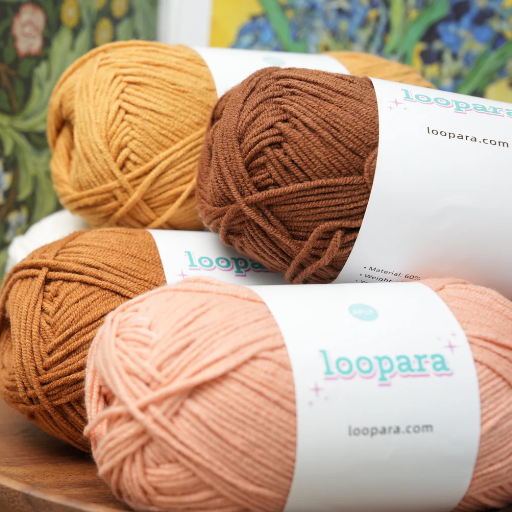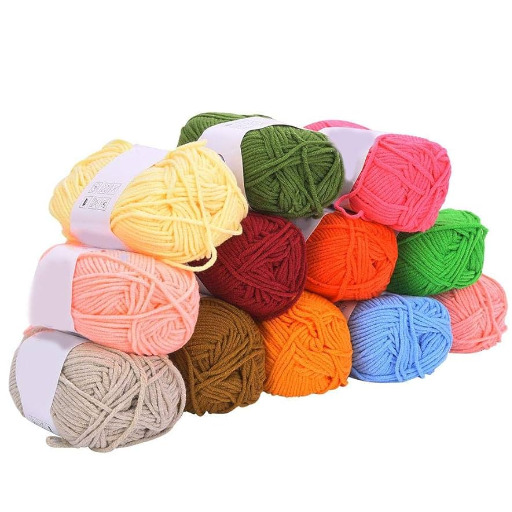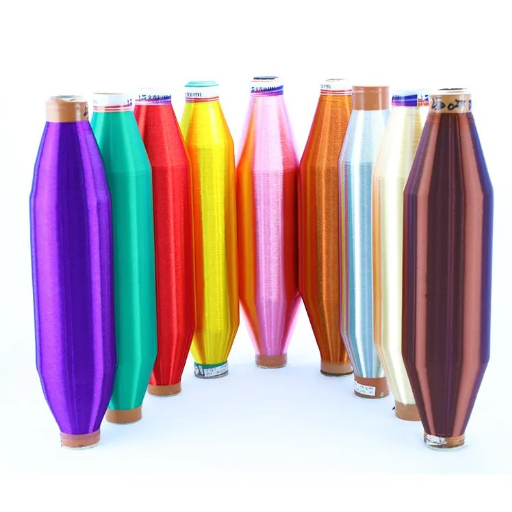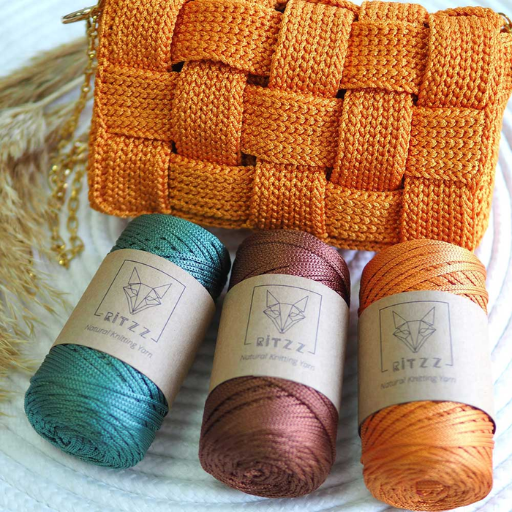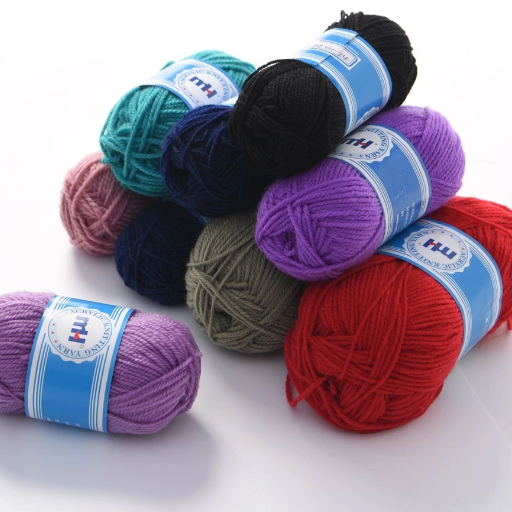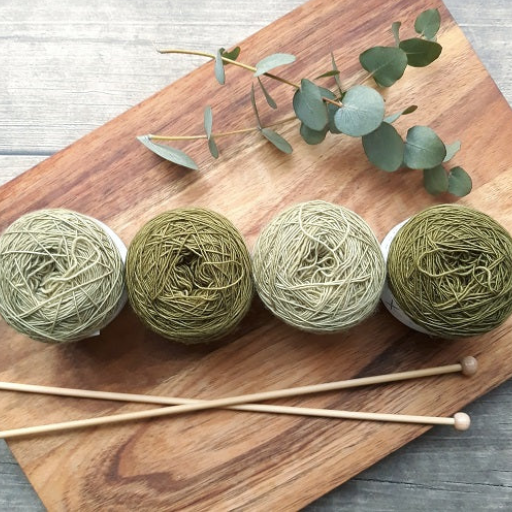Among other synthetic fibers, acrylic yarn is arguably the most sought after by crafters because of its low price, high resistance to wear, and variety of colors. However, among its many advantages, the inherent scratchiness of acrylic yarn often makes finished projects uncomfortable. Thankfully, with the right methods, the most rigid of yarns can be made plush. In this article, we provide a detailed, step-by-step guide on the processes of washing, conditioning, and heat-setting yarns in order to soften them. Additionally, we’ll explain the scientific principles behind these actions. This post enables you to turn any harsh acrylic yarn into something soft to the touch and ready for use in your handmade masterpieces.
Why is my acrylic yarn so scratchy and uncomfortable?

The scratchy and uncomfortable feel of acrylic yarn is due to the synthetic fibers used in its production. These fibers are formed through chemical processes that create a rough and rigid skeleton. Furthermore, unfinished edges or harsh appliqués from production may result in added roughness. Unlike natural fibers, acrylic does not have the softness associated with wool or cotton. However, this can be reduced with appropriate treatment that improves the feel texture of the yarn.
Understanding the nature of acrylic fibers
These fibers tend to be able to mimic wool, as they are warm, light, durable and reilient, however, the coarse texture they have stems from the methods used in production. Acrylic fibers, for instance, do not have breathability because of the acrylonitrile blends, and additionally, are prone to pilling since they are subjected to friction, causing them to snag. It is possible to address this issue by combining the fiber with other types, which would also allow steam or mechanical conditioning, which are known to soften synthetic fabrics, to be applied.
Acrylic fibers have wide application to fabrics for use in clothing, home adornments, or protective wear owing to their high moisture, UV, and environmental damage resistance. Though non-biodegradable unlike natural fibers, acrylic materials are low cost and easily available, thus ideal for mass production.
Acrylic fibers, like other synthetic polymers, pose a challenge in terms of breathability, surface friction and coarse texture. Blending them with another fiber or employing advanced finishes would easily solve many of the issues though. These blend methods could prove useful for the design and manufacture of practical application products.
Common causes of scratchy acrylic yarn
The scratchy feel of acrylic yarn can stem from the fiber’s processes, the raw materials sourced, or the finishing steps taken. During the production phase, cheap acrylic fibers often have residual chemicals or harsh textures which contribute to the substandard feeling. Even spinning the yarn in a loose manner adds to this problem. Additionally, improper storage along with humidity and dust can degrade the fibers, creating a tender surface over time, ultimately leading to a coarse touch.
How scratchy yarn affects your crochet and knit projects
Scratchy yarn is an overwhelming inconvenience that greatly influences the comfort, beauty, and longevity of your crochet and knit projects. To start, it may inflict damage or discomfort on the skin, especially in garments or accessories directly worn on the skin, like scarves, hats, or even sweaters. This will diminish the pleasure and usability of the finished product. Secondly, rougher yarns can hinder the crafting process because they may get caught on the hooks or the needles resulting in a slowed workflow. That snagging yawn can create uneven stitches; scratches and snags are bound to pose a problem. Finally, as a result of using scratchy yarn, the overall quality and longevity of the project may undergo decline. Due to the low-grade fibers used, the project is bound to pill, wear down, or lose its shape over time. It is important to use soft, high-grade yarns to ensure the final product has the desired comfort, beauty, and durability.
What are the best methods to soften acrylic yarn?

There are numerous ways to soften acrylic yarn to make it easier to work with for crafting projects. Probably the most used method is to wash the yarn or the completed item in warm water using gentle liquid soap as a detergent or fabric softener and agitate it lightly to relax the fibers. Another method includes soaking the yarn in a solution of vinegar which helps in softening any treatment left on the yarn. Running the yarn or the project through a tumble dryer at low heat with a dryer sheet will enhance softness even further. Also, mildly steaming the yarn with a handheld steamer will aid in loosening stiff fibers. Following the stated steps is crucial in avoiding damage while ensuring the best results.
Using fabric softener: A popular softening technique
Fabric Softener Soak is the easiest method that tackles both the softness of yarns and the finished projects. As for this method, all you would need to do is add one or two caps of liquid fabric softener into a basin filled with lukewarm water. You need to immerse the softening yarn or project and allow it to soak for around twenty to thirty minutes. After soaking, fabric undercool water and cake, press out the soften water from the fabric with a towel, but do not wring it as it can cause damage to the fiber. The best result will be achieved when the fabric is allowed to dry flat. This method is very good as it helps reducing unnecessary static and reduce stiffness while at the same time increasing pliability, which makes it very popular choice among yarn enthusiasts.
Hair conditioner method: Silky smooth results
The hair conditioner method is the cheapest and easiest way to soften fibers, especially delicate yarns. In a basin of lukewarm water, mix a small bit of hair conditioner, ensuring it completely dissolves. Submerge the fibers, letting them soak for around 15-30 minutes. The conditioner-containing compounds will act upon the fibers, increasing their softness, elasticity, and pliability. After the soaking time, rinsing the material under cool water until it is residue free is essential. Then, using a towel, press out excess water and the project is left to air dry flat. This method is widely applicable to myriad fiber types and is an effective and easy method of achieving silky smooth results.
White vinegar soak: A natural softening solution
A soak using white vinegar works hand in hand with one’s eco-friendly lifestyle, as it effectively softens fibers and increases their strength. This technique requires one to mix a solution of one cup white vinegar and two cups water in a large basin or sink. The material needs to be drowned completely so that there are no dry spots. Vinegar contains acetic acid, which aids in the decomposition of residues and softening of fibers without inflicting any damage; delicate textiles such as wool and cotton, are not harmed. Best results are achieved by soaking for 15-30 minutes, afterwards rinsing with cool water to ensure removal of vinegar odor. This method not only enhances the fibers, but also gets rid of foul smells and returns, or rather restores, the shine that was previously lost.
Can I soften acrylic yarn before starting my project?

Prior to beginning your project, you can soften acrylic yarn. The simplest method is soaking the yarn in a blend of warm water and fabric softener. Immerse the yarn fully and let it sit for approximately half an hour. After soaking, rinse it well with clean water to remove any residue and gently squeeze out excess water before letting it air dry. This method relaxes the synthetic fibers, resulting in softer yarn that is easier to manipulate.
Softening a skein of yarn: Tips and tricks
Submerging your yarn in warm water mixed with fabric softener is one of the best methods to make the yarn softer. First turn the fabric softener into a concentrate using lukewarm water. A 1 tablespoon of softener to 1 quart of water mixture works best and gives the correct proportion. Afterwards, place the entire skein or working yarn in the solution letting it soak for twenty to thirty minutes. Remove the softener residue by rinsing the yarn in cold water and using a towel, press out any excess water without twisting the fabric as that would result in damage. Subsequently, properly ventilate the area by unlocking the millet and allow for the yarn to sit undisturbed. Lastly, for a few minutes place the yarn in a mesh bag setting the dryer onto low heat. Smoother crafting experiences await thanks to these few tips.
Pre-washing acrylic yarn: Dos and don’ts
Dos:
- Water temperature should be lukewarm – To wash acrylic yarn, it is important to use lukewarm water as it helps in effective cleaning while also ensuring that the fibers are not damaged.
- Use gentler cleaning agents – During the washing process, an effective detergent helps maintain the integrity of the yarn being cleaned.
- Conduct a color fastness test before doing any washing – In case of using specialty or dyed acrylic yarn for the first time, conducting a test on a small section helps to ascertain if the color bleeds.
- Use hand washing or gentlest cycle – If possible, hand washing is recommended, but for washing machines, using the gentle cycle is best to eliminate excessive agitation.
- Remove remnants of the cleaning detergent – In order to prevent the yarn from becoming stiff when dried, all remnants of detergent must be rinsed off.
Don’ts:
- Avoid lukewarm water – For the best outcome, acrulic fabric should be avoided. Using hot water poses a risk of warping or weakening the fibers which drastically alters the structure of the yarn.
- Do not wring or twist – Gently pressing the fabric out with a towel helps preserve the structure of the yarn while still eliminating excess water.
- Avoid bleach, fabric softener, and strong detergents – These harsh chemicals have the potential to severely degrade the quality of the fibers, through strong detergents or softeners, dramatically lowering the quality of the garment.
- Do not tumble dry on high heat – Because of the risk of melting, deforming, or greatly weakening the yarn, it is best to only air dry with no heat.
- Avoid mixing with abrasive items – Doing washing on acrylic yarn together with coarse materials might result in pilling or snagging.
These suggestions should be followed if you want to pre-wash acrylic yarn without affecting its structure or looks.
How do I soften acrylic yarn after completing my project?

In order to improve the softness of acrylic yarn after completing your work, do the following:
1. Soften with a wash – Add a bit of fabric softener in lukewarm water, then place the completed work into the solution and stir until mixed.
2. Rinse thoroughly – Gets rid of any soap remnants by cleaning out the medium with lukewarm water.
3. Steam block the work – With the use of steam from an iron or steamer, hang about a half inch above the work so there is no direct contact. The yarn will soften due to the heat and moisture relaxing the fibers.
4. Brush lightly (optional) – put the soft bristled brush to areas that require a cozier texture to make the yarn softer.
Your project using acrylic yarn will be more comfort fitting and softer by following these steps.
Machine washing and drying: A safe approach
Use the delicate cycle with cold or lukewarm water when machine washing an acrylic yarn project in order to prevent stretching or damage. Use mild detergent as it contains no harsh chemicals which may damage the fibers. Avoid fabric softeners, as they can leave a residue that alters the texture of yarn. For additional protection against agitation, place the project in a mesh laundry bag.
Caring for the project’s drying, air dry by placing it flat on a clean towel or drying rack while reshaping the fibers, as needed. Some acrylic yarns can tolerate a low-heat tumble dryer, but always check the label. Excessive heat should be avoided at all costs as it results in melting or shrinking synthetic fibers. The washing and drying procedures described above will prolong the softness and longevity of acrylic yarn projects.
Steam blocking: Enhancing drape and softness
The application of steam blocking improves the softness and drape of acrylic yarn projects sightly. It starts with pinning the acrylic yarn project to a blocking mat or board and then shaping it to the desired dimensions. Direct application of steam is capable of damaging yarn, so it is recommended to hold a steam iron or garment steamer at a distance of 1-2 inches. The yarn should then be gently steamed, enabling the yarn fibers to relax to the pinned shape. The pins holding the garment should only be removed once the project is completely cooled and dried. The label does need to be checked along with some testing on a yarn swatch to make sure that steam blocking does not harm the yarn.
Are there any risks in softening acrylic yarn?

An approach involving the use of heat or steam on acrylic yarn may be risky, particularly due to its synthetic nature. If heat is set too high, or applied too slowly to a softening acrylic yarn, some of its fibers might melt and or permanently lose their structure. In addition, improper steaming techniques such as applying heat directly or using too much steam, could damage the yarn by changing its texture and or appearance as well. To minimize these opportunities from occurring, always recommend these guidelines of steam blocking, test a swatch, and take careful control of the temperature that is used.
Potential changes in yarn texture and appearance
The relaxation of the fabric’s acrylic fibers produces superior texture resulting in softer yarn, easier to manipulate and work with. If it is stretched beyond the set limits, steamed or set too long, this step might lead to a change in fabrication with inferior drape. While employing this strategy, one ought to be careful and apply adequate force but should remember that stretching it too far results in the yarn losing some of its elasticity, or taking on a glossy sheen while devoiding it from its initial aesthetic. All these alterations become irreversible, so utmost care to technique, including testing a swatch beforehand, is carefully adhered to without undermining the quality of the yarn.
Avoiding damage to your crochet or knit items
When treating the softening process of your crochet or knit items, the appropriate preparation and techniques must be applied to avoid damaging them. Ensure to steam on low or medium, and keep a safe distance from the item in question to avoid melting or scorching its fibers. The fabric should never be exposed to heat without safeguards, hence a pressing cloth or towel should always be used. Protecting burnable substrates such as synthetic fibers from dirt ensures long-lasting wear. Stains on fibers can be set permanently through steam blocking or applying heat, so additional care is required before beginning this step. Exploring different implementation strategies on a small covered area of the item works to confirm the effectiveness of the selected strategies. Adhering to the manufacturer’s guide also guarantees safety against permanent damage such as shrinking or softening of fibers, or loss of luster.
How can I maintain the softness of my acrylic yarn projects?

To help sustain the softness of your acrylic yarn projects, they should be washed with gentle treatment on a regular basis. They should be washed by hand or the delicate cycle should be used with cold water and gentle detergent so that the fibers are not damaged. Line drying is the best since high heat from dryers will stiffen acrylic fibers and change their shape. Softening the project by using a small amount of fabric softener while rinsing or sponging the piece with a damp cloth will also add more softness, provided there is no direct heat. Proper storage also helps retain the soft texture cloths, avoiding excessive humidity and sunlight.
Proper care and washing techniques
Use cold water to clean the items by hand or put them on a delicate machine cycle, alongside a mild detergent to appropriately care for and wash acrylic yarn. This protects the fibers and helps keep their integrity. During drying, avoid high heat and air dry the project flat; this helps prevent stiffening or warping. Enhancing softness from incorporated fabric softener in the rinse cycle, without direct heat, can help gentle steaming soften the project. Protect the acrylic projects from prolonged exposure to sunlight or moisture to avoid damage to the fibers by storing them in a cool, dry location.
Long-term storage tips for acrylic yarn items
Put away acrylic yarn items in an airtight container along with other yarn items to protect them from grime, pests, and moisture to keep them in perfect condition. Avoid mold and mildew growth by making sure the items are completely clean and dry before storage. Silica gel packets help control humidity levels within the storage area, adding up to mold prevention. Avoid tight folds, below a certain threshold the abrasion would induce persistent rigid folds; rather rollover the items gently to maintain their shape. Avoid areas with intense sunlight as it causes the items to fade restructure them in a nonresponsive cool, dark environment, and keep the storage area free from extreme temperature alterations. Regularly check and inspect the items to ensure they remain in perfect condition.
References
Frequently Asked Questions (FAQ)
Q: What can I do to soften scratchy acrylic yarn for my crochet projects?
A: The best techniques for softening scratchy acrylic yarn includes washing it with fabric softener, hair conditioner or steam blocking. The best results in a project are obtained when a yarn-softening experiment is conducted to determine the technique for the particular yarn that has the desired texture.
Q: Will blocking acrylic yarn help to make it softer?
A: Yes, blocking is known to make acrylic yarn softer and steam blocking is the most effective. Using a steamer or iron on the steam setting while holding it near, but not touching, the yarn helps. The process of “killing” the acrylic does yield softer material on direct steam contact.
Q: Can Red Heart Super Saver yarn also be softened?
A: Yes! Even though it is known to be a little rough, Red Heart Super Saver yarn can also be softened. Many crocheters have been known to use conditioner or fabric softener followed by tumble drying with dryer sheets to obtain best results. The care instructions label on the yarn should not be ignored in this process.
Q: Can I dry my acrylic yarn project in the dryer to soften it?
A: Softening can be achieved by putting the acrylic yarn projects in the drier. Use a low heat setting and add a few dryer sheets. However always check the yarn label if the product is machine dryable, because it works wonders in items like Super Saver yarn blankets.
Q: Do there exists some commercial tools developed exclusively for the purpose of softening yarn?
A: Certainly, a product such as Wool Wash or particular yarn softeners exits as precise examples. That said, numerous crocheters believe that household Downy fabric softener or even hair conditioner works just as well when it comes to acrylic yarns. It is recommended to try out different techniques and methods.
Q How do I ensure that my acrylic yarn projects remain soft over time?
A: If you want to wash your projects, use mild soap alongside fabric softener. Additionally, allow hair conditioner to mix during the rinse cycle or use dryer sheets while tumble drying the project. It’s very important to follow the care instructions on the yarn label since that will make certain that your projects remain soft indeed.








